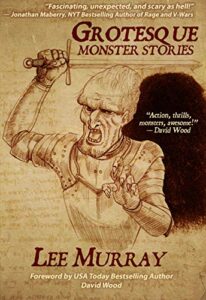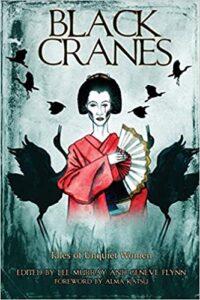Grotesque: Monster Stories by Lee Murray
Things in the Well, 2020
ISBN-13 : 979-8611527153
Available: Paperback, Kindle edition ( Amazon.com )
In Grotesque: Monster Stories Lee Murray has written tales in a wide variety of styles and subgenres in the horror genre. The combination of her imaginative twists on familiar tropes and the New Zealand setting and atmosphere creates some great creepy, dread-inducing, and horrifying tales.
Interestingly, three of Murray’s stories include mindless, killer creatures. In addition to her zombie story, “The New Breed”, which raises the question of who really is the monster in the story, two very different stories provide unique versions of the golem. “Grotesque” is a horror story about the uncovering of an underground passage between two French chateaux, framing events of 1560 when the sixteen-year-old king of France had to be smuggled out, sealing the passage behind him to contain… something. “Into the Clouded Sky” revisits a character Murray has written about previously, Taine McKenna. This is a nonstop adventure with supernatural visitors, terrifying sand golems, and natural catastrophe, set in New Zealand, and moves at a breakneck pace. These two stories were original for this collection.
Other strong stories include “Edward’s Journal”, a Lovecraftian tale told in epistolary manner, paints a lush, wet, and terrifying portrait of an English soldier with the mission of burning the Maori people’s crops to force them to move of their land, lost and starving in the New Zealand forests in an increasingly surreal and sanity-breaking situation; “Selfie”, a post-apocalyptic story with a disturbing amount of creative and vividly described body horror; and “Dead End Town”, an incredibly grim and difficult story to read even before the supernatural gets involved, as it involves repeated violence towards and sexual abuse of a child.
I was excited to see a kaiju story, “Maui’s Hook”. I think these must be difficult to write, especially from the point of view of a person experiencing it, because it’s hard to appreciate giant monster violence when it’s aimed at an individual human instead of another giant monster. Murray did a great job creating a terrifying, unkillable monster and chronicling its violence in a setting and context that I haven’t seen in kaiju films.
I haven’t touched on every story in this review but I found them all compelling. Grotesque: Monster Stories should have something to interest almost everyone. Highly recommended.
Reviewed by Kirsten Kowalewski
Editor’s Note: Grotesque: Monster Stories is a nominee on the final ballot for this year’s Stoker Awards in the category of Superior Achievement in a Fiction Collection.







Follow Us!